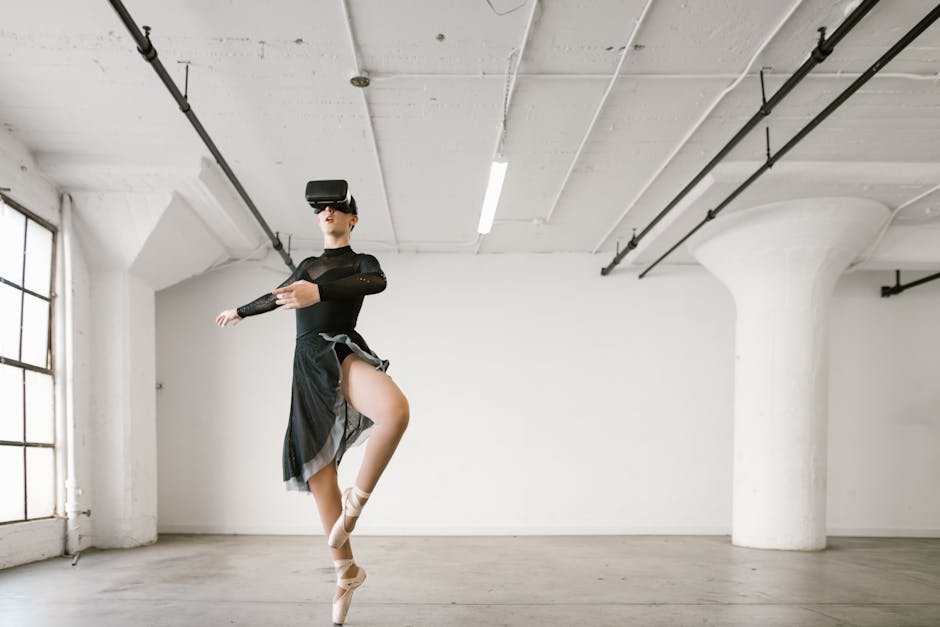Game design has evolved into a dynamic art form, blending creativity and technology in ways that captivate millions. In the digital age, the boundaries between traditional art and interactive media blur, offering designers unprecedented opportunities to craft immersive experiences.
As I dive into the world of game design, I see it as more than just coding and graphics. It’s a complex dance of storytelling, visual artistry, and innovative mechanics that engage players on multiple levels. Whether you’re a seasoned developer or a curious gamer, understanding the creative processes behind these digital masterpieces can deepen your appreciation for the art form.
The Evolution of Game Design as an Art Form
Game design has undergone significant transformations from its early days, evolving into a sophisticated art form that seamlessly merges creativity with technology.
From Arcade Cabinets to Virtual Reality
Early video games emerged on simple arcade cabinets, focusing on pixelated graphics and basic gameplay. Titles like “Space Invaders” and “Pac-Man” captured players’ imaginations with their straightforward yet challenging mechanics. Over the decades, advances in technology have dramatically transformed game design. Consoles such as the Nintendo Entertainment System (NES) brought more detailed visuals and complex narratives into homes. Today, virtual reality (VR) offers immersive experiences, allowing players to interact with lifelike environments. This journey from 8-bit graphics to immersive VR highlights the progression of game design as an artistic medium.
The Impact of Digital Technology on Creativity
Digital technology has revolutionized creative processes in game design. With powerful game engines like Unreal and Unity, developers can craft intricate worlds and dynamic gameplay. These tools enable artists to create stunning visuals and realistic physics, pushing the boundaries of what’s possible in interactive media. Online collaboration platforms have also enhanced creativity, allowing international teams to work together seamlessly. Techniques such as procedural generation and motion capture add layers of depth to game design, providing unique and engaging player experiences. The integration of advanced technologies into game design underscores the art form’s evolution in the digital age.
Key Elements of Art in Game Design
Game design combines visual aesthetics, narrative, and audio to create immersive and engaging experiences. Let’s explore these key elements in more detail.
1. Visual Aesthetics and Style
Visual aesthetics play a critical role in game design, creating a unique atmosphere and setting the game’s tone. These visuals range from pixel art in retro games to hyper-realistic graphics in modern titles. Art direction defines the color schemes, character designs, and environmental details, ensuring consistency throughout the game. Successful aesthetic choices can make a game memorable and instantly recognizable.
2. Narrative and Storytelling Techniques
Narrative is essential in game design, driving player engagement and emotional connection. Storytelling techniques vary widely, including linear plots, branching narratives, and emergent stories generated by player actions. Dialogue, in-game events, and cutscenes help convey the plot, character development, and the game’s lore. Effective storytelling can turn a good game into an unforgettable experience by making players invest in the game’s world and characters.
3. Audio Design and Musical Scores
Audio design enhances the gaming experience by providing auditory feedback and enriching the atmosphere. Sound effects, ambient noise, and voice acting contribute to realism and immersion. Musical scores are equally vital, evoking emotions that align with gameplay moments. Composers create themes that resonate with the story and setting, leaving a lasting impact. Iconic soundtracks can elevate a game’s status and embed it in players’ memories.
Tools and Technologies Shaping Modern Game Design

Modern game design relies heavily on advanced tools and technologies. These resources empower artists and developers to create immersive, high-quality gaming experiences.
Software and Platforms for Artists and Developers
Various software and platforms are vital for artists and developers. Unity and Unreal Engine are leading game engines. Unity offers flexibility with its scripting in C#, while Unreal Engine excels in photorealism with its Blueprints visual scripting. Adobe Photoshop and Illustrator serve as primary tools for 2D artists. For 3D modeling and animation, tools like Blender and Autodesk Maya are crucial.
Online collaboration platforms streamline team workflows. GitHub hosts version control, enabling multiple developers to work simultaneously without conflicts. Trello and Notion help teams manage projects and tasks efficiently. Asset stores provide pre-made models, textures, and scripts, saving valuable development time.
Emerging Technologies and Future Trends
Emerging technologies are reshaping game design. Virtual reality (VR) immerses players in fully interactive worlds. Devices like Oculus Rift and HTC Vive offer high-resolution displays and precise tracking. Augmented reality (AR) overlays digital elements onto the real world; games like Pokémon GO use AR to blend gaming with reality.
Artificial intelligence (AI) enhances game design by creating responsive, adaptive environments. AI algorithms can generate procedural content, ensuring unique experiences for each player. Cloud gaming platforms, such as Google Stadia and NVIDIA GeForce Now, enable high-quality gaming on any device with internet access.
Blockchain technology introduces new possibilities with non-fungible tokens (NFTs). NFTs enable digital ownership of in-game assets, fostering a player-driven economy. As technology advances, the game design landscape will continue to evolve, offering new creative opportunities.
Iconic Games that Revolutionized Artistic Expression
Iconic games have reshaped artistic expression in the digital age. They blend creative processes with cutting-edge technology to craft unforgettable experiences.
Case Studies and Their Influence on the Industry
The Legend of Zelda: Breath of the Wild
“The Legend of Zelda: Breath of the Wild,” released in 2017, redefined open-world gaming. Its non-linear storytelling and vast, interactive landscapes set new standards. Players explore a meticulously designed world that encourages curiosity and experimentation. By blending artistic visuals with innovative mechanics, the game influenced future open-world titles.
Journey
“Journey,” created by Thatgamecompany in 2012, showcases how minimalist design can evoke profound emotional responses. The game’s unique art style, music, and cooperative multiplayer design create a meditative experience. Accolades for its artistic achievements positioned “Journey” as a benchmark for indie games, proving that less can indeed be more.
Minecraft
Launched by Mojang in 2011, “Minecraft” transformed how players interact with digital worlds. Its sandbox nature and block-based graphics allowed users to build, explore, and create endlessly. As one of the best-selling games of all time, “Minecraft” showed that creativity and simplicity could drive mass appeal, influencing countless indie and major game titles alike.
The Last of Us
Naughty Dog’s “The Last of Us,” released in 2013, combined deep narrative with high-quality graphics and audio design. The story-driven gameplay, combined with emotional depth and character development, set it apart. This game exemplified how narrative artistry could elevate the gaming medium to resemble a cinematic experience.
Shadow of the Colossus
“Shadow of the Colossus,” developed by Team Ico and released in 2005, stood out for its innovative use of scale and minimalist storytelling. Each battle against a colossus felt grand and personal, integrating the sense of isolation into the gameplay. This design influenced many adventure games that focus on experiential storytelling.
These case studies highlight the diverse ways in which iconic games have revolutionized artistic expression. By merging storytelling, visuals, and innovative technology, these games set industry standards, pushing the boundaries of what games can achieve as an art form.
Which Players Appreciate Game Art the Most
Understanding the appreciation of game art involves looking into the demographics and psychology of players. Appreciation varies among different groups based on age, tastes, and gaming habits.
Insights on Demographics and Player Psychology
- Younger Players: Demographics reveal that younger players, particularly those aged 18-34, show a high appreciation for game art. According to a report by ESA, 38% of gamers in this age range prioritize visual quality in games. These players grew up with evolving graphics and sophisticated game worlds and consequently value aesthetic experiences.
- High Need for Cognition: Player psychology also plays a role. Players exhibiting a high need for cognition, which refers to the enjoyment of thinking deeply and engaging in complex thought processes, tend to appreciate artistic games more. These players often gravitate towards games like “Journey” and “Gris,” where visual storytelling and immersive environments are paramount.
- Multimedia Arts Interest: Players with a keen interest in multimedia arts often find game art captivating. They enjoy how games blend traditional art forms such as painting, sculpture, and cinema with interactive elements. This group includes both creators and connoisseurs who appreciate the intricate design and artistic vision behind each game.
- Core Demographics: Younger players, those with a high need for cognition, and individuals with a multimedia arts interest are the core demographics who most appreciate game art. These players recognize and celebrate the artistic elements that transcend traditional gaming experiences.
Conclusion
Game design in the digital age has truly evolved into a multifaceted art form. The blend of storytelling, visual artistry, and innovative mechanics offers players experiences that are both immersive and emotionally resonant. With tools like Unity and Unreal Engine at our disposal, the possibilities for creativity are endless.
Emerging technologies like virtual reality and artificial intelligence are pushing the boundaries even further, making the future of game design incredibly exciting. As we continue to explore these advancements, the line between traditional art forms and digital creations will only blur more.
Ultimately, the appreciation for game art is growing, especially among younger players and those with a deep interest in multimedia arts. It’s clear that the artistic elements in games are not just an added bonus but a core component that enhances the overall experience. The future of game design as an art form looks bright, and I can’t wait to see where it takes us.

 Jasmine Wellish is a key contributor at Info Wave Circle, known for her insightful articles and creative approach to technology and societal issues. With a deep passion for innovation and a knack for storytelling, Jasmine plays a crucial role in communicating the vision and achievements of Info Wave Circle to a broader audience.
Since joining the team, Jasmine has been instrumental in crafting compelling content that highlights the transformative potential of technology. Her work not only informs but also inspires the Info Wave Circle community and beyond. Jasmine’s dedication to exploring new ideas and her ability to convey complex concepts in an engaging manner make her an invaluable asset to the organization’s mission of fostering innovation and societal progress.
Jasmine Wellish is a key contributor at Info Wave Circle, known for her insightful articles and creative approach to technology and societal issues. With a deep passion for innovation and a knack for storytelling, Jasmine plays a crucial role in communicating the vision and achievements of Info Wave Circle to a broader audience.
Since joining the team, Jasmine has been instrumental in crafting compelling content that highlights the transformative potential of technology. Her work not only informs but also inspires the Info Wave Circle community and beyond. Jasmine’s dedication to exploring new ideas and her ability to convey complex concepts in an engaging manner make her an invaluable asset to the organization’s mission of fostering innovation and societal progress.
